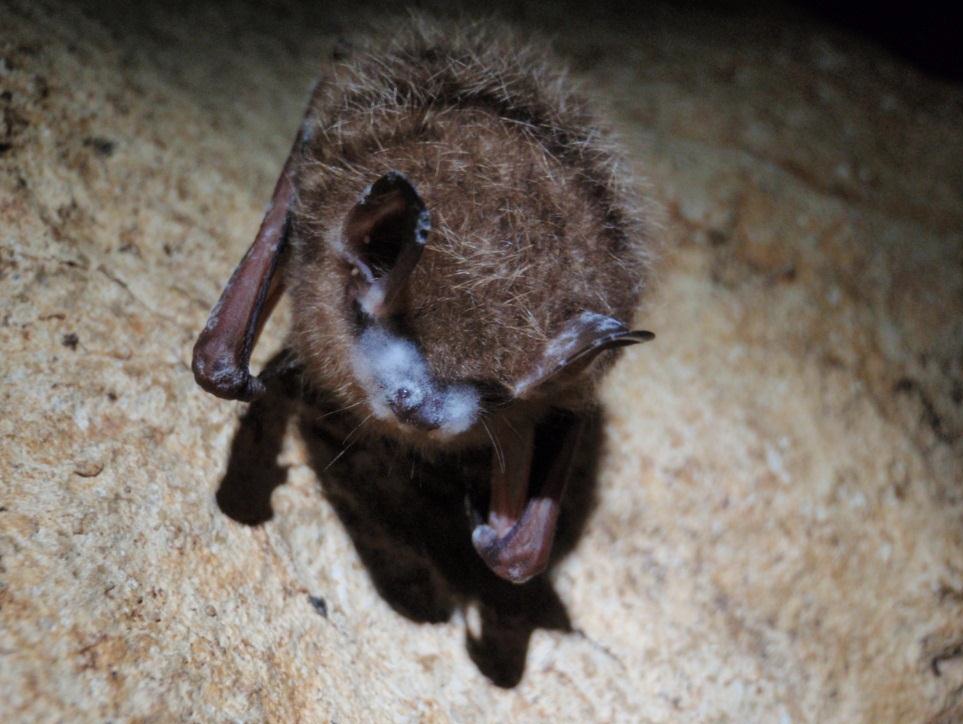 According to a Georgia Department of Natural Resources press release:
According to a Georgia Department of Natural Resources press release:
The Georgia Department of Natural Resources, the National Park Service and the U.S. Fish and Wildlife Service announced today that bats with white-nose syndrome were found recently at two caves in Dade County.
A National Park Service biologist and volunteers discovered about 15 tri-colored bats with visible white-nose symptoms in a Lookout Mountain Cave at Chickamauga and Chattanooga National Military Park in late February. On March 5, a group led by a Georgia DNR biologist also found tri-colored bats with visible symptoms in Sittons Cave at Cloudland Canyon State Park.
This news follows quickly on the announcement just yesterday that white nose syndrome had been found in South Carolina. The Georgia Department of Natural Resources release says, and the U.S. Fish and Wildlife’s WNS map confirms, that Dade County, Georgia is contiguous with counties in Alabama and Tennessee that confirmed WNS last year.
I’ll sometimes say that “it’s white nose season,” but what that means may not be clear if you haven’t been following WNS closely. This is a cold-loving fungus that requires low temperatures to become symptomatic in bats. WNS is typically detected at the end of winter, particularly in southern locations or in places where the infection is in its early stages. Add in time for a laboratory to analyze the bat to confirm WNS, and you are usually looking at a window of March through June for announcements of new WNS sites.
Read the Georgia DNR release here.
Find the USFWS map here. (Look carefully at the northwest corner of Georgia.)
If you want traditional media, there is a short piece in USA Today, here.
Photo: An eastern pipistrelle bat — aka tri-colored bat — found at Cumberland Gap National Historical Park (in Kentucky, Tennessee and Virginia) shows visible signs of white-nose syndrome. Courtesy of the National Park Service
